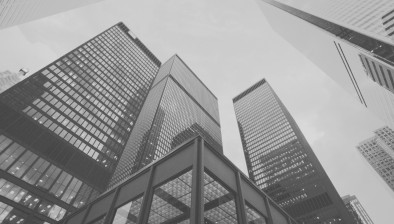Construction returns to growth with sharpest rise in output since December 2018
UK construction companies signalled a return to business activity growth during February, following a nine-month period of declining workloads.

The latest monthly survey of purchasing managers also pointed to the sharpest rise in new orders since December 2015.
At 52.6 in February, up from 48.4 in January, the headline seasonally adjusted IHS Markit/CIPS UK Construction Total Activity Index registered above the 50.0 no-change value for the first time since April 2019. Moreover, the latest reading signalled that the overall rate of construction output growth was the fastest for 14 months.
Survey respondents noted that improved demand had translated into higher levels of business activity in February, particularly in the housing and commercial sub-sectors. There were some reports, however, that severe weather conditions had led to delays on site and acted as a brake on growth.
Residential activity remained the best-performing construction category. Latest data signalled the strongest expansion of house building activity since July 2018. Commercial work also returned to growth in February, with the sub-sector posting its fastest increase in business activity since November 2018. In contrast to the overall trend for construction output, civil engineering activity fell again during February. However, the rate of decline was only marginal and the least marked for 13 months.
February data pointed to a strong recovery in new order intakes across the construction sector. The increase in new work was the steepest recorded for just over four years. Survey respondents widely commented on greater tender opportunities and the release of spending that had been delayed in the run up to Brexit. There were also reports citing a boost from increased infrastructure contract awards, including those related to HS2.
Higher levels of incoming new work helped to stabilise employment numbers across the construction sector in February. At the same time, demand for sub-contractors picked up for the second month running and to the greatest extent since December 2018.
Purchasing activity returned to growth in February, which mirrored the trend seen for construction output levels. Stronger demand for inputs placed additional pressure on supply chains, with lead times lengthening to the greatest extent since last October. However, latest data indicated a slowdown in overall cost inflation since January.
Construction firms are upbeat about their growth prospects for the next 12 months. The degree of optimism eased since January, but remained much stronger than seen in the second half of 2019.
Tim Moore, economics director at IHS Markit, which compiles the survey said: “February’s survey data adds to signs that the UK construction sector has started to rebound after a downturn through the second half of last year.
“Growth of business activity was stronger than at any time since the end of 2018, supported by the fastest rise in new orders for just over four years.
“Some construction firms suggested that the recovery in output would have been even stronger had there not been disruptions on site from severe weather conditions in February.
“There were widespread reports that pent-up demand released since the general election had helped to boost workloads, especially in relation to house building and commercial construction projects.
“While construction order books have begun to recover in the opening part of 2020, the fly in the ointment is the uncertain impact of the coronavirus outbreak on UK economic growth prospects.
“A renewed slowdown could see domestic investment spending put back on hold and dampen the outlook for the UK construction sector.”
Duncan Brock, group director at the Chartered Institute of Procurement & Supply, added: “After a sustained period of contraction in construction last year, the resurgence in levels of new work at the fastest rate since December 2015 was a surprising but much-needed development for a sector that was on its knees.
“As the blocks of December’s election and Brexit uncertainty were largely removed, it was the residential sector that was the main winner with the fastest escalation in housebuilding since July 2018.
“Purchasing levels rose at their fastest rate for over a year across the construction sector meaning unprepared suppliers bore the brunt of the upsurge.
“Their performance deteriorated again this month as delivery times and stocks of raw materials came under pressure.”
Kate Kirby, construction & infrastructure partner at global legal business DWF, commented: “Following a nine-month period of decline, UK construction companies indicated a return to business activity growth during February, the sharpest rise in new orders since December 2015 and the strongest growth since end of 2018. This is likely due to the anticipated post general election ‘bounce’ and is a welcome boost for the sector.
“The question now is around the impact the coronavirus outbreak will have on the global supply chain of construction materials and workforce, which is likely to result in significant delays to projects. With investors speculating the global economy could grow at its slowest rate since 2019 due to the coronavirus outbreak, are we likely to see the same growth reported in the coming months? Probably not.”





















